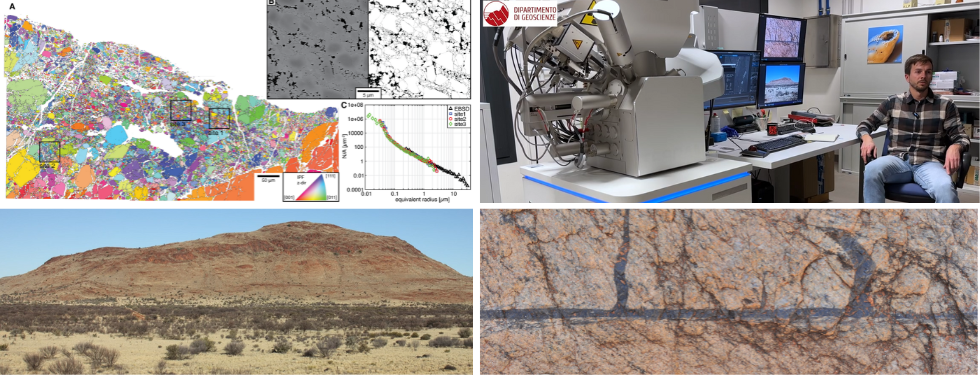A pseudotachylyte as a key to quantify the energy dissipated on fault during an earthquake

A study recently published in Science Advances shed new light on the energy dissipated on fault during an earthquake, an estimate that is fundamental to understand the mechanics of earthquake faulting.
The study was led by Giovanni Toffol, a researcher at the Department of Geosciences of the University of Padua, and the approach was based on the study of fault rocks that recorded ancient earthquakes and are now exhumed to the Earth's surface.
"We studied fault rocks exhumed from a depth of approximately 20 km that recorded earthquakes occurred 540 million years ago. In particular, we studied a garnet-rich gneiss crosscut by a pseudotachylyte fault vein. A pseudotachylyte is a frictional melt produced during seismic slip and is considered as an evidence of a seismic event, it is basically a fossilized earthquake. The sample was collected in the Musgrave ranges, in central Australia, and more specifically along the Woodroffe Thrust which is a crustal-scale shear zone that hosts the largest volume of tectonic pseudotachylytes worldwide", Dr. Toffol explains.
The team of scientists used high-resolution scanning-electron-microscopy techniques, especially to analyze shocked garnet in a fault wall-rock, to provide the first estimate of all three energy components for a seismic fault patch exhumed from midcrustal conditions.
"The main result of this study was quantifying the plastic damage produced by an earthquake and demonstrating the existence of a clear hierarchy in the energy partitioning. Heat accounted for most of the dissipated energy, prevailing over surface energy and the energy associated with crystal lattice distortion.”
LINK TO THE RESEARCH: https://www.science.org/doi/full/10.1126/sciadv.adi8533
AUTHORS: Giovanni Toffol, Giorgio Pennacchioni, Luca Menegon, David Wallis, Manuele Faccenda, Alfredo Camacho, Michel Bestmann





